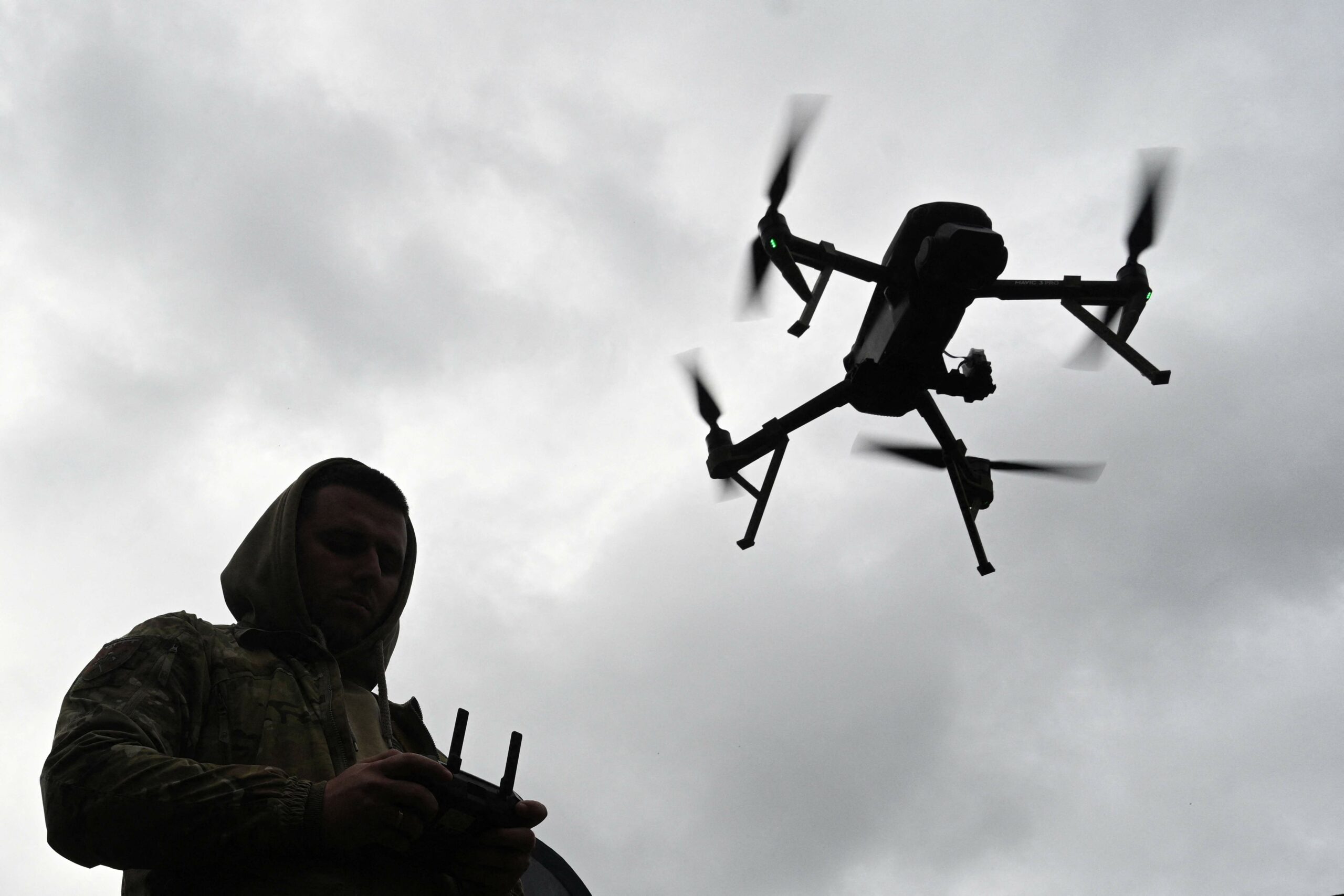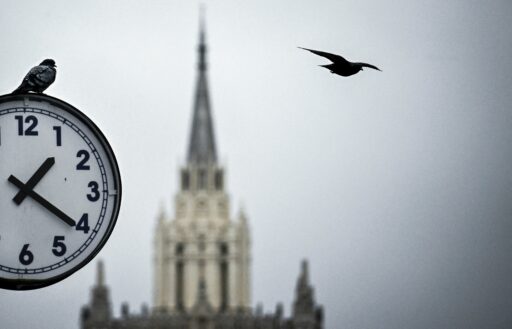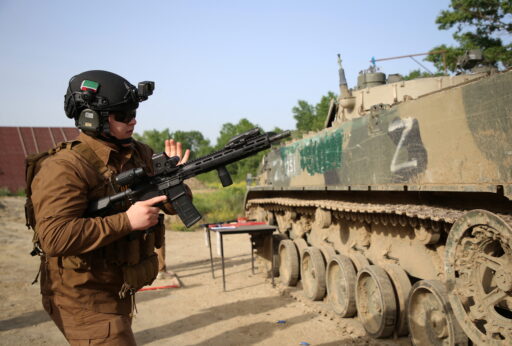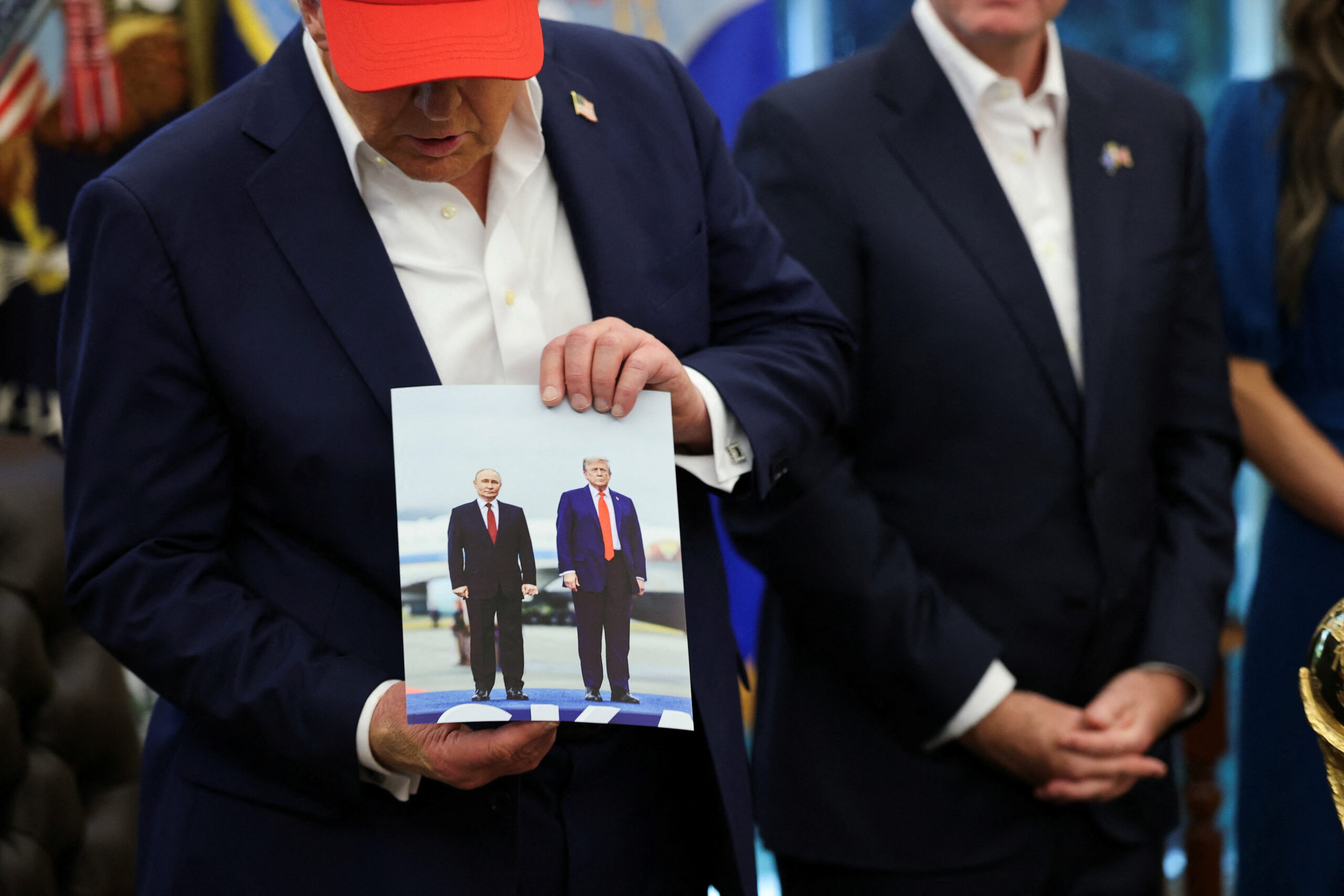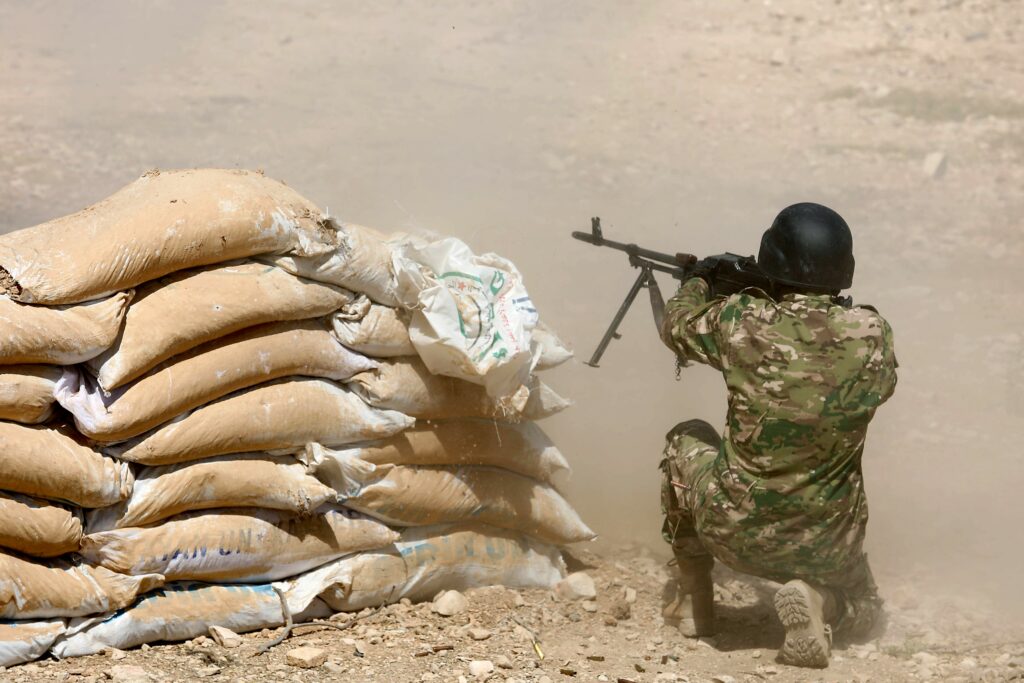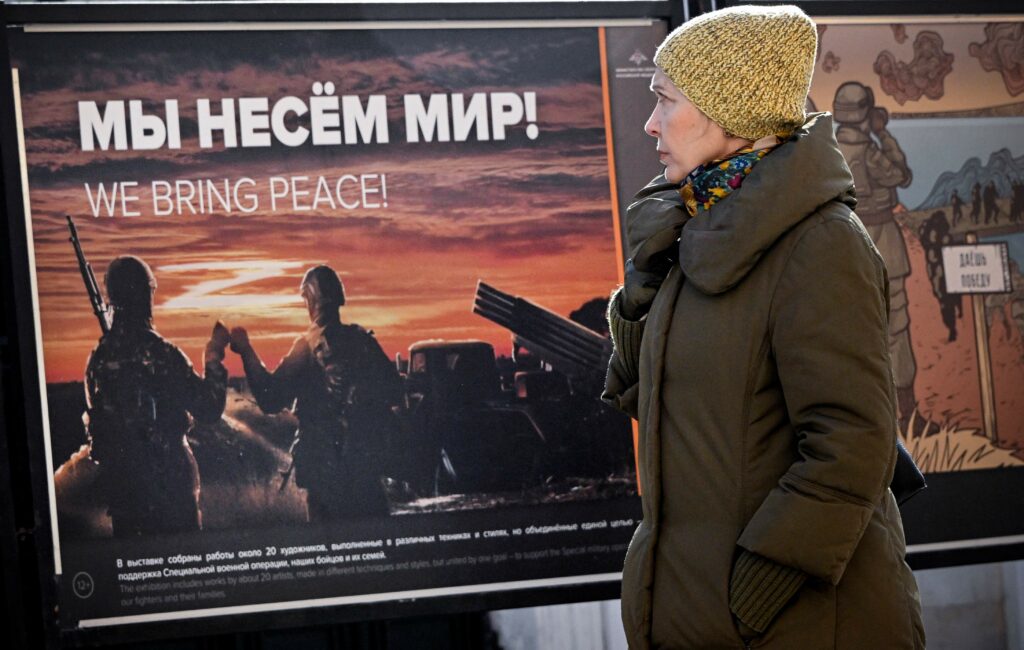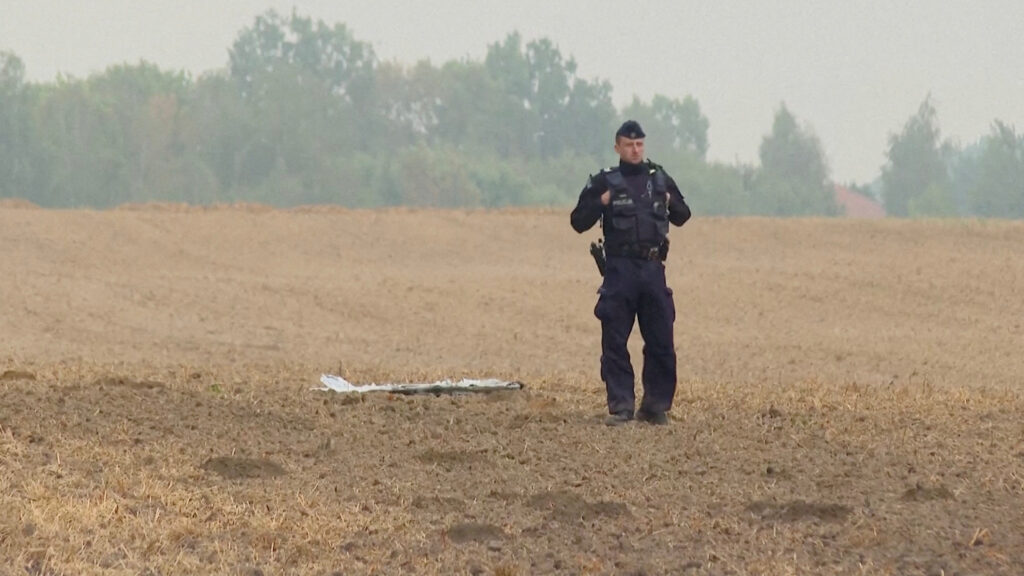Despite constant criticism of Beijing from Ukrainian leadership, China remains one of the key suppliers of unmanned aerial vehicles to Ukraine. On the battlefield, the Ukrainian army actively uses commercially produced Chinese drones for reconnaissance and strikes on Russian positions. At the same time, official relations between Kyiv and Beijing are experiencing a deep crisis: China demonstratively distances itself from the war, while Ukrainian diplomacy publicly condemns its stance.
Such contradictions between overtly anti-Chinese political rhetoric and critical dependence on Chinese components create a sufficiently tense space for interaction, in which political cooperation does not seem possible for now. However, economic cooperation continues to gain momentum.
The Rapid Growth of Drone Supplies from China in 2022
In the first months of the full-scale war, Ukrainian units faced an acute shortage of unmanned aerial vehicles. The front’s needs were partially met through civilian drones, predominantly produced by the Chinese company DJI—the world leader in commercial unmanned aerial vehicles. Compact DJI Mavic and DJI Phantom quadcopters turned out to be sufficiently cheap, easy to operate, and available on the market, allowing Ukrainian forces to be quickly saturated with them. In October 2023, Denys Shmyhal, who was then serving as Ukraine’s Prime Minister, stated that the country was procuring up to 60% of the world’s DJI Mavic production. Ukraine’s Ministry of Defense did not clarify whether the Prime Minister’s comments referred to the state procurement program or unofficial supply channels.
The reaction from the Chinese side is noteworthy, as it would be repeated time and again in the future. A DJI representative commented to Defense News: «We are utterly surprised by the statement by the Ukrainian prime minister as he has no insight into DJI’s production numbers. This statement has nothing to do with reality and is completely misleading regarding DJI’s involvement in the use of its products in Ukraine. The statement bears no resemblance to reality and is totally misleading with regards to DJI’s involvement in the use of its production in Ukraine.» According to the company representative, all DJI distributors and resellers are contractually obligated to regularly confirm compliance with the ban, or risk losing business relations with the company.
In 2022, Ukraine’s purchases of Chinese drones were chaotic: they were carried out urgently, in large volumes, and through various channels, including direct purchases on Chinese e-commerce platforms. By early 2023, Ukraine had established regular drone supplies through third countries. Based on Ukrainian customs statistics, millions of Chinese unmanned aerial vehicles and components arrived in Ukraine in the first six months of 2023 alone—mainly through intermediaries in Europe. The supplies included both drones and spare parts (batteries, cameras, motors) necessary for their operation. Popular models such as DJI Mavic, Matrice, and Autel are used ubiquitously by Ukrainian forces—from artillery fire correction to strike missions involving grenade drops. According to estimates from the Royal United Services Institute (RUSI) as of May 2023, Ukraine was losing hundreds of such drones monthly due to Russian air defense and electronic warfare actions, forcing constant procurement of new batches. Under these conditions, Chinese drones became consumable materials, and the sustainability of Ukrainian forces partially depended on the ability to replenish these losses.
To simplify imports, in February 2023, President Volodymyr Zelenskyy signed laws No. 8360 and No. 8361, exempting the import of copters, thermal imagers, night vision devices, and radios from VAT and duties. In early January, the government simplified the import procedure for unmanned aerial vehicles: they were allowed to be imported via paper or electronic declarations prepared by the carrier themselves. Additionally, the requirement for guarantee letters was canceled, and non-tariff regulation was abandoned. In June 2025, Volodymyr Zelenskyy signed bills to cancel VAT and import duties on materials, assemblies, units, equipment, and components for UAVs during martial law.
Summing up the supply volumes, note that in 2022, Ukraine imported only small drones weighing up to 0.25 kg: 530,030 units worth $ 26.5 million. In 2023, the import volume grew more than 20-fold and became more diverse: 190,780 units worth $ 705.7 million were imported, of which 175,210 (91.8%) fell into the 0.25−7 kg category. Drones in this category retained a dominant share (95.7%) in 2024 as well: 595,570 out of 622,200 units worth $ 1.286 billion. From 2022 to 2025, China accounted for over 90% of all unmanned aerial vehicles imported into Ukraine.
Drone Supplies in 2025
Kommersant Ukraine reported that in the first half of 2025, Ukraine procured Chinese drones worth $ 725 million. According to Ukraine’s State Customs Service, compared to the first half of 2024, the value volume of drone supplies from China to Ukraine increased by 34.3%, and the physical volume by 46.1%. According to data from the «Slovo i Dilo» portal, from January to July 2025, Ukraine imported a total of 352.53 thousand drones worth $ 1.056 billion, of which 341,840 (97%) were devices weighing 0.25−7 kg. These are mainly multicopters for video recording.
On May 27, 2025, Volodymyr Zelenskyy stated that China had ceased supplies of DJI Mavic unmanned aerial vehicles (UAVs) to Ukraine while increasing their exports to Russia. A high-ranking European official confirmed these words anonymously. It is claimed that China also reduced supplies of unmanned aerial vehicle components to Western countries. However, official statistics as of the end of September 2025 do not yet reflect these changes.
Business and Politics: Separate Tracks
China remains the leading supplier of goods to Ukraine. In 2023, the total import volume to Ukraine was $ 63.5 billion, of which $ 10.4 billion came from China. In 2024, imports grew to $ 70.7 billion, with China’s share increasing to $ 14.4 billion. However, data from Ukraine’s customs service significantly diverges from information from China’s General Administration of Customs (GACC): according to Chinese statistics, exports to Ukraine amounted to $ 2.78 billion in 2023 and $ 3.7 billion in 2024. In January-August 2025, according to Ukraine’s customs service, the country imported goods worth $ 52.6 billion, of which $ 11.6 billion came from China. This share exceeds the total imports from Poland ($ 5 billion) and Germany ($ 4.2 billion), which rank second and third among supplier countries.
Discrepancies between Ukrainian and Chinese import statistics are due to differences in methodology and accounting. Ukraine’s customs records the country of origin of the goods, even if the shipment first arrived in Poland, Germany, or Turkey and was then delivered to Ukraine from there. For Kyiv, this is imports from China, whereas in Chinese statistics, such goods are recorded as exports to the intermediary country. A significant role is also played by the cost calculation method: whether imports are accounted for at CIF price (including transportation and insurance) or exports at FOB price (i.e., only the cost of the goods at the border). Additionally, statistics are influenced by peculiarities in commodity classification. For example, drone components or dual-use electronics in Chinese reporting may pass under different codes and not be considered finished products, whereas in Ukraine they are recorded as imports from China. However, the main reason for the data gap is that part of the supplies goes through bypass routes. Thus, the difference in customs service figures allows us to judge the scale of «gray» imports into Ukraine.
But how do these strong economic ties align with the near-total freeze in political dialogue?
At present, China and Ukraine essentially exist in parallel planes. Chinese diplomacy is oriented toward interaction with major players—the US, EU, Russia—and views Ukraine only in the context of confrontation with the West, seeing no independent center of power in it capable of influencing Chinese interests. In turn, Ukraine’s leadership takes a tough public stance, openly criticizing Beijing. Volodymyr Zelensky noted that «Ukraine has no strong ties with China because China doesn’t want that.» Kyiv has tried to attract Beijing’s attention through public appeals, inviting Xi Jinping to discuss the «peace formula» or to an international summit on Ukraine, but such tactics, effective for democratic countries, do not work with authoritarian China.
As a result, a paradox emerges: intensive trade, including supplies of Chinese drones and electronics critical to the Ukrainian army, contrasts with minimal political contacts and a lack of mutual trust. This is partly explained by the global alignment. Beijing avoids the risk of deteriorating relations with Moscow and views Ukraine through the prism of confrontation with the US, while Kyiv bets on alliance with the West and is not ready for serious compromises for hypothetical Chinese support. As a result, both sides maintain the status quo, continuing economic cooperation (by inertia and mutual benefit) but avoiding political rapprochement.
To understand how important it is for China to explore the situation «on the ground» while lobbying for Chinese business interests, one should pay attention to the recent meetings of the new Chinese Ambassador to Ukraine, Ma Shengkun. Since December 2024, he has held meetings with Ukraine’s Minister of Agrarian Policy and Food Vitaliy Koval (who left the post in July 2025), President of the Ukrainian Chamber of Commerce and Industry Gennadiy Chyzhykov, Head of the State Service of Ukraine on Food Safety and Consumer Protection Serhii Tkachuk, Minister of Economy (as of January 14, 2025) Yulia Svyrydenko (who took the position of Prime Minister in July), as well as with Kyiv Mayor Vitali Klitschko. Additionally, the ambassador visited Vinnytsia, Zakarpattia, and Cherkasy oblasts.
A unique situation is emerging: for Ukrainian business and individual regions, economic interaction with China seems promising and justified. And this concerns not only the export of agricultural products to China but also attracting Chinese investments. However, these sentiments do not find support from the central political leadership.
Paper Neutrality
How did it happen that China, which in Kyiv is considered essentially a «Russian ally,» is ramping up supplies of drones, components, vehicles, and electronics to Ukraine? And why is Russia unable to prevent this?
Imports of Chinese drones occur despite Beijing’s official position, which formally prohibits direct sales of unmanned aerial vehicles to warring parties. In the spring of 2022, DJI announced the cessation of supplies of its products to Russia and Ukraine. However, in practice, this ban is easily circumvented: numerous dealers and volunteer funds procure drones in third countries and forward them to the front.
In the summer of 2023, China tightened export controls, introducing licensing restrictions on the export of drones with a flight range of more than 30 km and a payload capacity exceeding 7 kg. Starting September 1, 2024, these restrictions were extended to all types of drones and their key components (controllers, motors, navigation cameras) supplied to Russia and Ukraine. These measures were announced under the pretext of preventing the use of Chinese UAVs in combat operations. However, the widespread presence of DJI on the front lines shows that China’s sanctions have limited effect.
Could Russia have privately expressed concerns about supplies of Chinese-made drones to Ukraine? Yes, such statements may have been made, but chains of intermediaries can still ensure drone procurement in any case. The only effective restraint tool in this scenario would be a decision by China’s political leadership to oblige drone manufacturers to monitor end recipients. Apparently, Beijing either ignored such requests from Moscow or cited the impossibility of tracking the end buyer (which is indeed a sufficiently complex task). Thus, the declared closeness of Russia and China does not translate into real actions from the Chinese «ally.»
The irony is that Beijing, proclaiming neutrality, de facto remains a key participant in the military equation, influencing the capabilities of the warring parties through control over technology chains. China is capable of significantly altering the balance of power and influencing the warring sides by sharply restricting drone and component exports to Ukraine, Russia, or both countries simultaneously.
The Future of Relations: Pragmatism or Confrontation?
What are the prospects for China-Ukraine relations amid a protracted war? In the near term, no cardinal changes should be expected. Beijing will continue to adhere to a dual position. Political alienation from Kyiv will persist, as China avoids open conflict with the Kremlin. At the same time, direct military aid to Russia from China, akin to support for Ukraine from the EU and US, is unlikely, as it would undermine Beijing’s relations with Europe and provoke secondary US sanctions. For China, it is extremely important to maintain economic ties with the whole world, not just Russia, so it will balance and not cross the «red line» of direct arms supplies.
The Kremlin has no leverage to push Beijing toward open intervention in the Russian-Ukrainian war. As an economic superpower, China pursues its own interests, which do not always align with Russia’s ambitions. The strategic partnership between the two countries is based not on ideals but on pragmatic considerations, and changes in conditions—economic, foreign policy, or strategic—may reveal the limits of Vladimir Putin’s and Xi Jinping’s «friendship.» For Moscow, China already plays an important role as an indirect partner supplying components and technologies, but the Kremlin cannot count on more.
For Ukraine, the key question is how to build relations with China after the war ends. If Kyiv expects rapid recovery and attraction of investments, ignoring the world’s second-largest market will be impossible. In the postwar period, significant resources, technologies, and infrastructure projects will be needed, and China, as a global economic power, could play a positive role in the country’s reconstruction. Even now, Chinese companies are showing interest in Ukrainian raw materials and the agricultural sector.
Before the war, Chinese investors attempted to acquire the Ukrainian aircraft engine manufacturer Motor Sich, but in March 2021, Volodymyr Zelenskyy enacted a decision by the National Security and Defense Council (NSDC) to return the enterprise to state ownership. After the war, such projects may become relevant again. The question is whether both sides will find the political will to implement them.
Much depends on the war’s outcome and the global situation. If Ukraine preserves its sovereignty and pursues European integration, it will inevitably become part of the Western alliance system—and an important logistics hub on the way to the European market. In that case, cooperation with Beijing may be limited to trade without strategic partnership. European countries maintain economic ties with the PRC, and Ukraine will likely adopt a similar pragmatic position.
